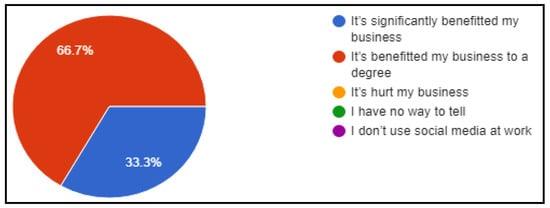Choosing the Best Homeschool Curriculum: A Comprehensive Guide

So you’ve decided to take the plunge into the world of homeschooling, eh? Well buckle up, my friend, because you’re about to embark on a wild ride full of spelling bees, math problems, and possibly a few tears (both yours and your child’s). But fear not, for I am here to guide you through the treacherous waters of curriculum selection with my comprehensive guide to choosing the best homeschool curriculum. Grab your pencils, sharpen your wits, and let’s dive headfirst into this educational adventure!
Different Types of Homeschool Curriculums
When it comes to homeschooling, there are as many different types of curriculums as there are ways to avoid doing standardized testing. Here are a few unique options to consider:
- Montessori: This hands-on approach to education allows kids to learn at their own pace and encourages independence. Just be prepared for your child to try to teach you how to properly fold clothes and pour water using a tiny pitcher.
- Unschooling: Who needs textbooks when you can let your child follow their interests and learn through real-life experiences? Just don’t be surprised when your kid wants to quit math entirely in favor of raising chickens in the backyard.
- Classical: Get ready to immerse yourself in the ancient world with this curriculum that focuses on grammar, logic, and rhetoric. Your child will be reciting Latin declensions in no time, whether they understand it or not.
But wait, there’s more! You could also explore eclectic curriculum options that mix and match various teaching methods, or even create your own personalized curriculum tailored to your child’s unique learning style. The possibilities are endless in the world of homeschooling, so don’t be afraid to get creative and think outside the textbook!
Factors to Consider When Choosing a Homeschool Curriculum
So you’ve decided to homeschool your kids, congratulations! Now comes the daunting task of choosing a homeschool curriculum. Here are some factors to consider that will make your decision a little less overwhelming:
Learning Style: Consider your child’s learning style when choosing a curriculum. Some kids thrive on hands-on activities, while others prefer to read and write. Make sure the curriculum you choose aligns with your child’s preferred learning style.
Flexibility: Homeschooling offers the freedom to create your own schedule, so make sure the curriculum you choose is flexible enough to accommodate your family’s needs. Look for a curriculum that allows you to adjust lesson plans and deadlines as needed.
Cost: Homeschooling can be expensive, so it’s important to consider the cost of the curriculum. Some curriculums are more affordable than others, so do your research and find one that fits your budget. Remember, expensive doesn’t always mean better!

Understanding Your Child’s Learning Style
So, you’ve got a little munchkin running around and you’re trying to figure out how to help them learn better. Well, fear not! Every child has their own unique learning style, and once you crack the code to understanding it, you’ll be on your way to becoming a bona fide parenting pro. Here are a few tips to get you started:
First things first, pay attention to how your child interacts with the world around them. Do they learn best through hands-on activities or by listening and observing? Maybe they thrive in a social setting, or perhaps they prefer to work independently. By observing their behavior, you can start to piece together clues about their learning style.
Once you’ve identified your child’s learning style, tailor your approach to match. If they’re a visual learner, try using colorful flashcards or charts to help them absorb information. For auditory learners, reading aloud or engaging in discussions might be more effective. And for kinesthetic learners, get ready to roll up your sleeves and dive into some hands-on activities.
Remember, no two children are the same, so don’t be afraid to experiment with different strategies until you find what works best for your little one. And above all else, keep it fun! Learning should be an enjoyable experience, so get creative and think outside the box. Who knows, you might just discover a hidden talent for finger painting or building makeshift forts in the process!

Researching and Comparing Curriculum Options
When it comes to , it can feel like diving headfirst into a never-ending pit of possibilities. From traditional textbooks to online modules, the choices are endless. But fear not, intrepid curriculum explorer! With a little bit of humor and a whole lot of determination, you can navigate this daunting terrain with ease.
The first step in your quest for the perfect curriculum is to create a list of must-haves. What are the key components you absolutely cannot live without? Do you need interactive lessons, engaging activities, or maybe even a virtual pet to keep your students motivated? Jot down all of your requirements and get ready to hunt them down like a pack of hungry wolves.
Next, it’s time to hit the internet – the treasure trove of curriculum options. Dive into the depths of educational websites like a fearless pirate plundering for gold. Scope out each option, taking note of their strengths and weaknesses. Is one curriculum heavy on worksheets but light on creativity? Is another packed with innovative projects but lacking in assessment tools? Keep track of it all in a trusty spreadsheet, the map to your curriculum treasure hunt.
As you sift through the sea of curriculum choices, remember to keep your sense of humor intact. Laugh off the overwhelming options, giggle at the ridiculous lesson plans, and chuckle at the absurd prices. After all, navigating the wild world of curriculum options shouldn’t feel like a chore – it should be an adventure! So buckle up, fearless curriculum warrior, and charge forth into the unknown. The perfect curriculum is out there, waiting for you to discover it!

Choosing a Curriculum That Fits Your Budget
When it comes to selecting a curriculum for your homeschooling needs, it’s important to find one that not only fits your child’s educational requirements but also fits your budget. After all, you don’t want to break the bank just to teach your little ones their ABCs and 123s!
Here are some tips for choosing a curriculum that won’t have you tightening your purse strings:
- Do some research: Look online for free or low-cost curriculum options. There are plenty of resources available that won’t cost you an arm and a leg.
- Consider second-hand materials: Check out local homeschooling groups or online marketplaces for gently used curriculum materials. You never know what treasures you might find!
- DIY it: Don’t be afraid to get creative and put together your own curriculum using free resources and materials you already have at home. Who says you need to spend a fortune to teach your kids?
Remember, homeschooling doesn’t have to break the bank. With a little bit of savvy and creativity, you can find a curriculum that fits your budget and still provides your child with a quality education.
Key Components of an Effective Homeschool Curriculum
So, you’ve taken the plunge into the world of homeschooling. Congratulations! Now, you just need to figure out what the heck you’re going to teach your kids. Don’t worry, we’ve got you covered with the .
First things first, you’re going to need some core subjects. These are the basics that every student should know. Think reading, writing, and ‘rithmetic. Throw in some science, history, and art for good measure. Just make sure your kids don’t get too caught up in finger painting during art class.
Next up, you’ll want to include plenty of hands-on activities. You know, stuff that gets the kids out of their seats and actually doing something. Whether it’s a science experiment, a math game, or a historical reenactment, hands-on activities will keep your kids engaged and excited about learning.
And let’s not forget about field trips. Sure, you might not be able to jet off to Europe every other week, but that doesn’t mean you can’t get out of the house. Visit a local museum, hike a nearby trail, or just take a trip to the grocery store and turn it into a math lesson. The best part? Field trips count as school, so you can totally justify that trip to the ice cream shop as a “cultural experience.”
Tips for Customizing a Curriculum to Meet Your Child’s Needs
When it comes to customizing a curriculum for your child, you have to think outside the box. Don’t be afraid to get creative and have some fun with it! Here are a few tips to help you tailor your child’s education to meet their unique needs:
- Think about your child’s interests: If your child is obsessed with dinosaurs, why not incorporate some prehistoric learning into their science and history lessons? Who knows, they may even become a paleontologist!
- Don’t be afraid to mix things up: Just because the textbooks say you should be teaching a certain way, doesn’t mean you have to stick to that. If your child learns better through hands-on activities or visual aids, go for it!
- Get creative with projects: Instead of a boring book report, why not have your child create a comic strip retelling the story? Or have them build a diorama of a historical event? The possibilities are endless!
Remember, the key is to make learning fun and engaging for your child. By customizing their curriculum to suit their interests and learning style, you’ll not only help them succeed academically but also foster a love of learning that will last a lifetime. So go ahead, get creative and watch your child thrive!
FAQs
How do I choose the best homeschool curriculum for my child?
Choosing a homeschool curriculum can be overwhelming, but fear not! Start by considering your child’s learning style, interests, and academic strengths. You can also consult with other homeschooling parents for recommendations.
What factors should I consider when selecting a homeschool curriculum?
When selecting a homeschool curriculum, consider the teaching style, flexibility, cost, and academic rigor. You’ll want to find a balance between a curriculum that challenges your child and one that doesn’t have you pulling out your hair in frustration.
Is it better to go with a pre-packaged curriculum or create my own?
While pre-packaged curriculums are convenient, creating your own curriculum allows for more customization and flexibility. Plus, you’ll have the satisfaction of knowing you’re the mastermind behind your child’s education. Cue evil genius laugh.
What should I do if my child doesn’t seem to be thriving with the current curriculum?
If your child is struggling with the current curriculum, don’t be afraid to switch things up. Experiment with different teaching methods, subjects, or even take a break. Remember, homeschooling is all about adapting to your child’s needs.
How can I ensure that my child is receiving a well-rounded education with our chosen curriculum?
To ensure your child is receiving a well-rounded education, incorporate a variety of subjects such as math, science, language arts, history, art, and music. You can also supplement your curriculum with field trips, extracurricular activities, and hands-on projects.
In Conclusion
Congratulations, you’ve made it to the end of our comprehensive guide on choosing the best homeschool curriculum! We hope you’ve enjoyed our witty banter and expert advice on finding the perfect fit for your family. Remember, the key to successful homeschooling is finding a curriculum that works for you and your unique teaching style. So go forth, brave homeschoolers, and may the odds be ever in your favor as you embark on this educational journey. Happy homeschooling!






